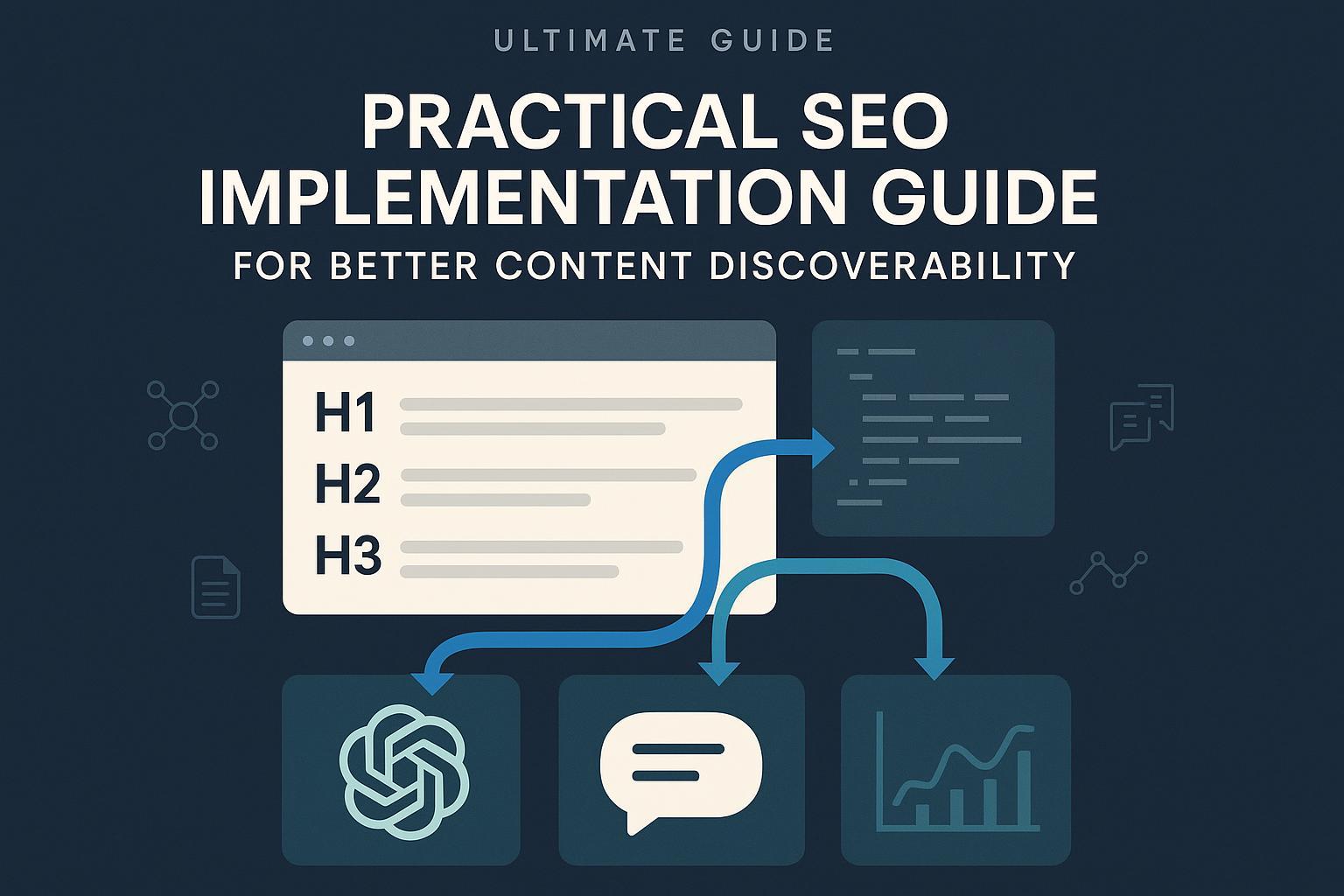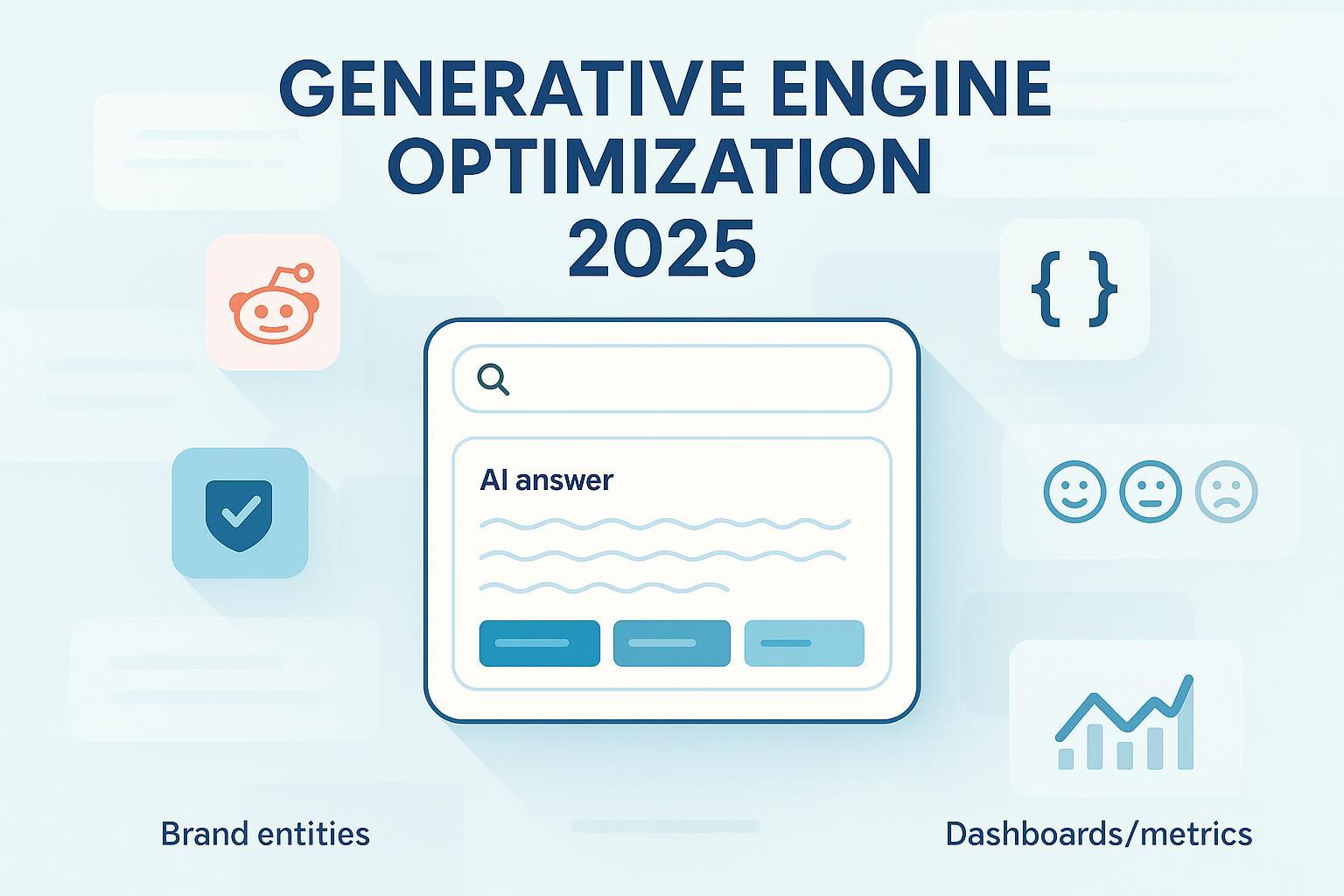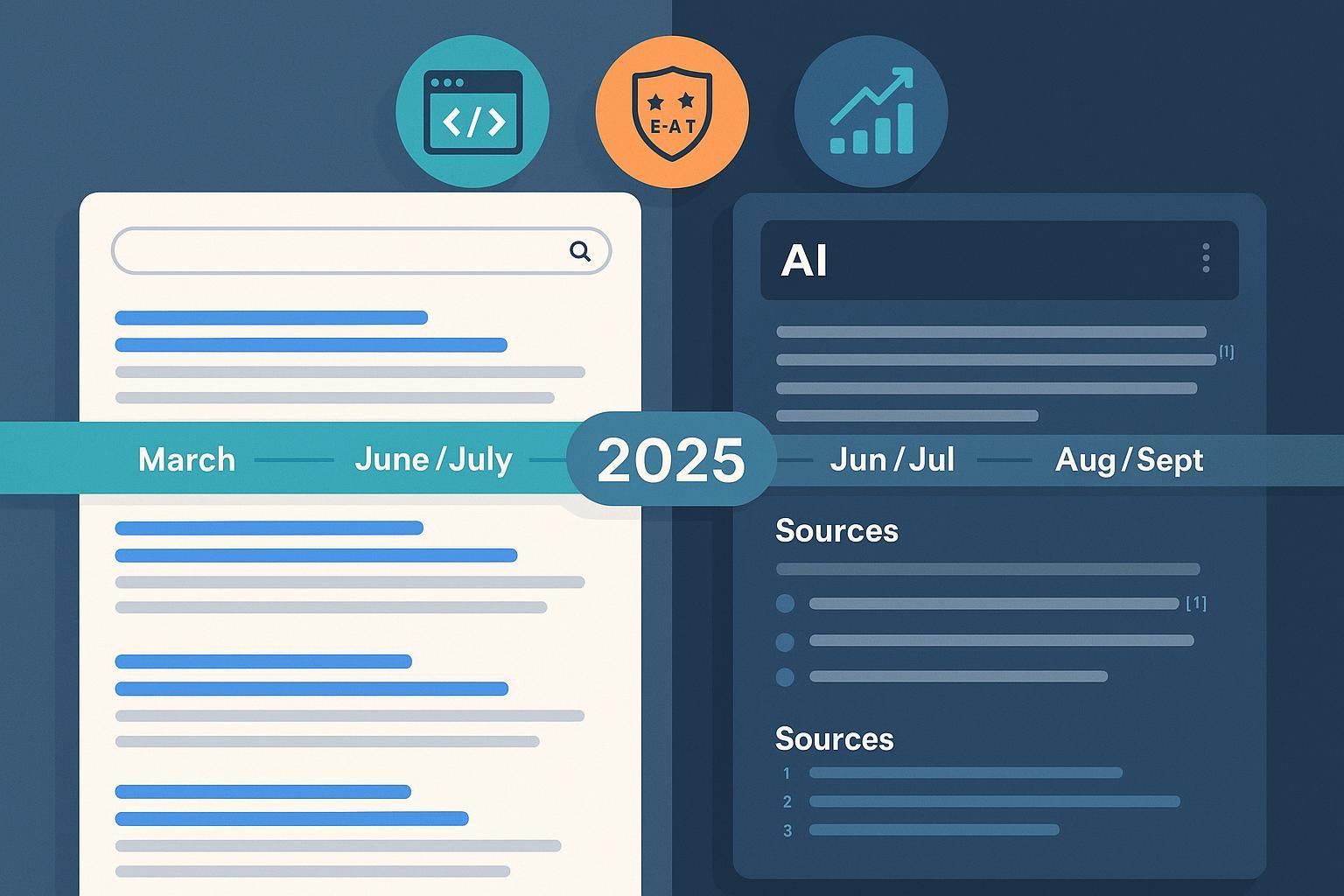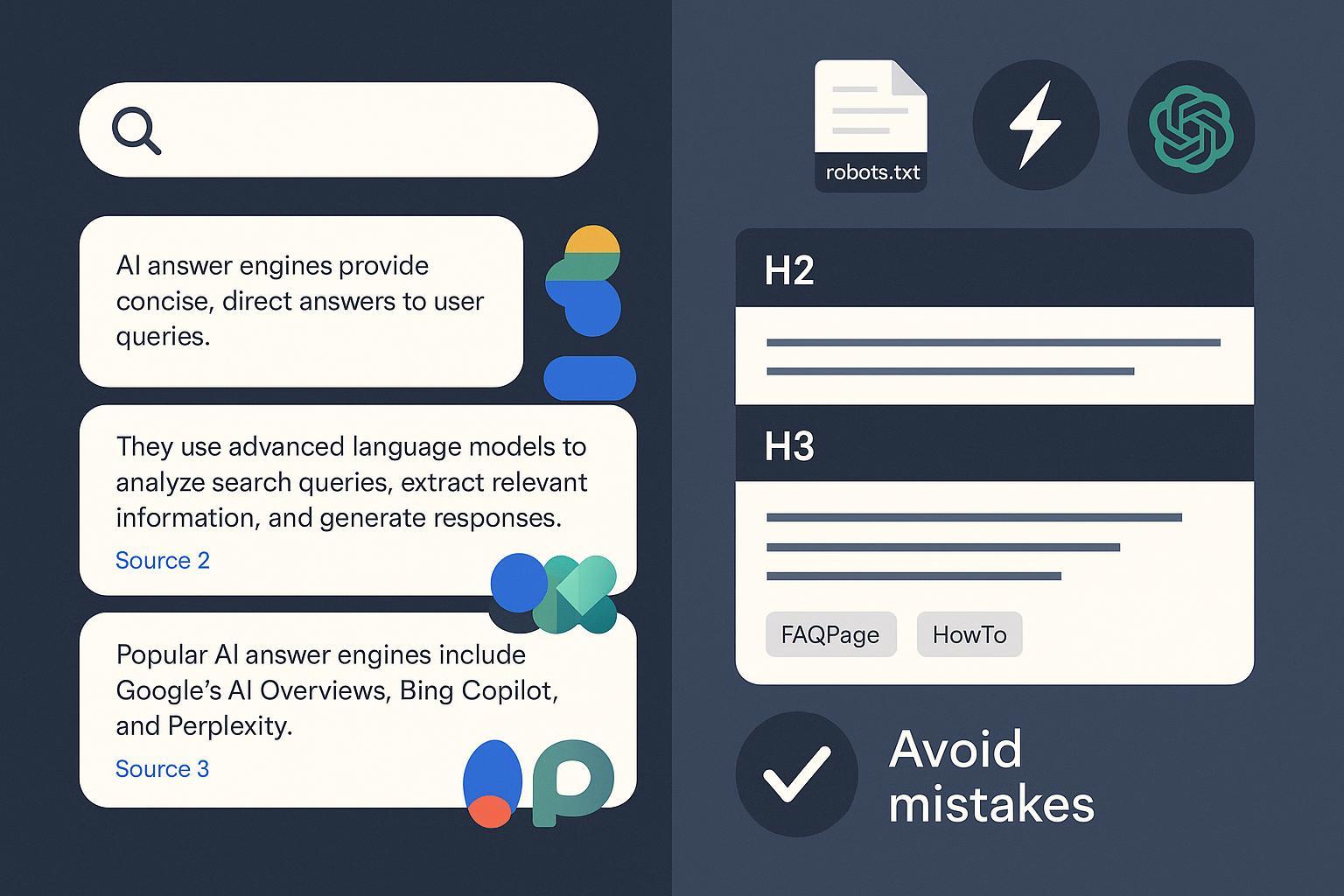Best Practices for AI-Friendly Content in Google AI Mode (2025)
Step-by-step best practices to create AI-friendly content that gets cited in Google AI Mode results (2025). Actionable SEO, schema, E-E-A-T for professionals.

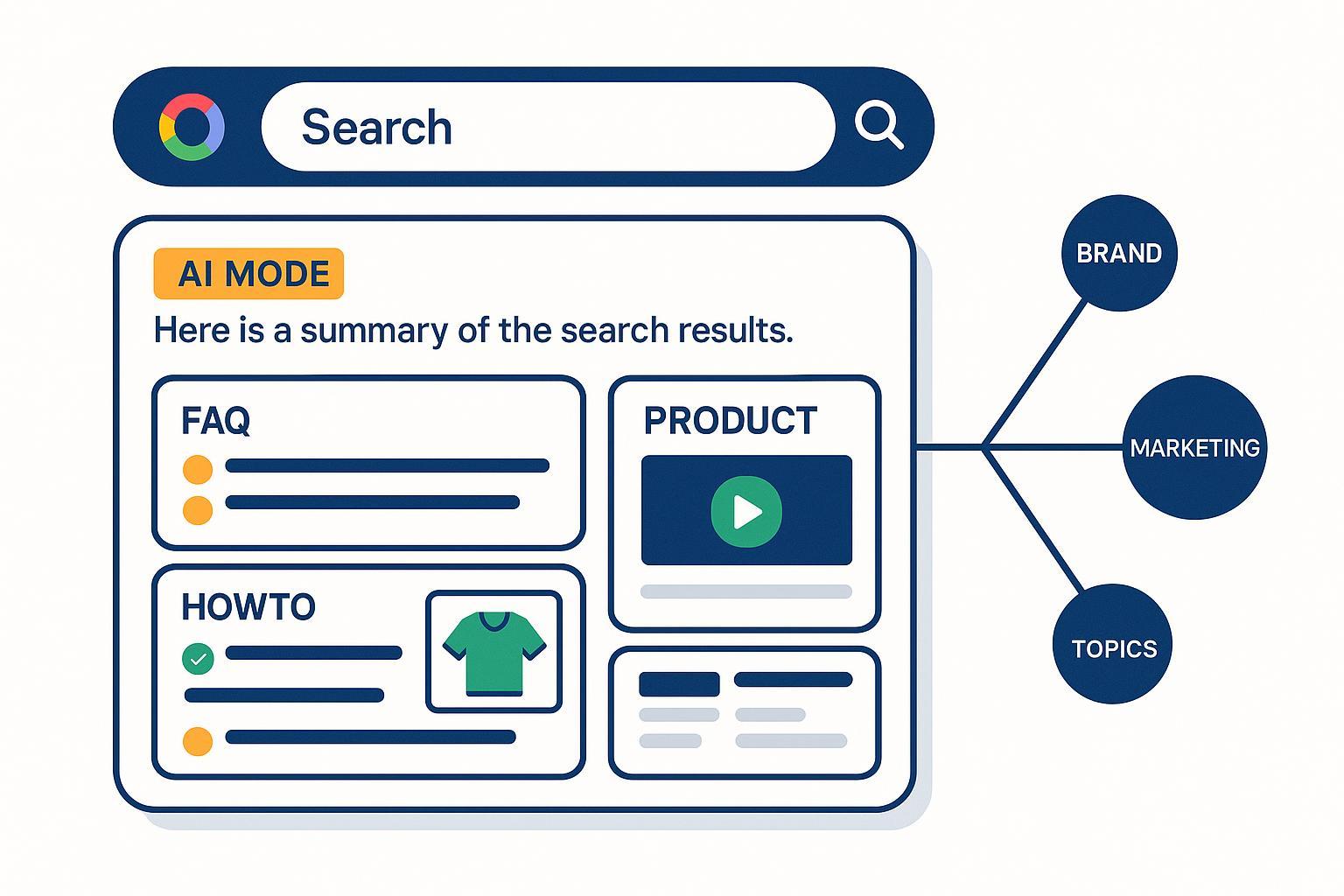
Start with the outcome: content that AI can cite, summarize, and trust
If you want inclusion in AI Mode, build pages that answer the exact question, expose clean structure for extraction, and demonstrate real-world credibility. Google’s own guidance for site owners emphasizes people‑first usefulness, E‑E‑A‑T signals, and technical accessibility; see Google Search Central’s AI features overview for publishers in the 2025 update in AI Features and Your Website (Google Search Central, 2025).
Two realities to frame your approach:
- AI panels are common and evolving. In March 2025, Semrush measured AI Overviews on roughly 13.14% of searches (Semrush 2025), with other trackers showing growth throughout late 2024–2025.
- Expect lower CTR where AI summaries appear. Multiple studies observed declines; for example, Ahrefs reported top result CTR drops around 34.5% when AI Overviews are present (Ahrefs, 2025). Plan for visibility and qualified session metrics, not just classic blue‑link clicks.
Below is the field‑tested playbook we use across industries.
1) Format content for AI extraction before you write a single paragraph
Think “answer modules,” not just articles. AI Mode favors pages that make it trivial to identify the answer span and supporting context.
- Define the question explicitly in an H2/H3. Follow with a 50–120 word direct answer paragraph. Then expand with steps, bullets, or examples.
- Add a concise “definition box” for key terms. 1–3 sentences, plain language, no fluff.
- Use ordered steps for instructions. Keep each step action‑led. Add tools, time, and inputs if relevant.
- Provide a summary bullets list mapping to common follow‑ups (“cost,” “time,” “risks,” “alternatives”).
- Ensure on‑page text matches any structured data you’ll add. Mismatches reduce trust.
Example “direct answer” block pattern:
What’s the fastest way to compress product images without losing quality? Use a lossless tool like
cwebpor Squoosh, set WebP/AVIF output at 75–85 quality, and keep longest edge under 1600px. Batch process via CLI or build tool (Sharp/Imagemin). Verify with Lighthouse and actual visual checks on a Retina display. Typical page weight drops 35–60% with no visible loss.
Why this works: AI Mode and traditional snippets both benefit from consistent headings, tight answer spans, and scannable structure. Google reiterated “helpful, people‑first content” as the core standard in its 2025 refresh of Creating Helpful Content (Google Search Central, 2025).
2) Implement structured data that mirrors visible content
Google continues to recommend JSON‑LD and complete, accurate properties. Validate with Rich Results Test and monitor in Search Console. See the latest guidance in Structured data: a developer’s intro (Google Search Central, 2025).
- Article: Use Article (or NewsArticle/BlogPosting) with headline, datePublished, dateModified, author (Person with credentials), and publisher (Organization with logo).
- Person/Organization: Strengthen E‑E‑A‑T with detailed Person and Organization markup, including sameAs links to authoritative profiles.
- HowTo: For stepwise guides. Include HowToStep/HowToDirection, estimated time, tools, and images if available.
- FAQPage: Only for genuine, visible Q&A content. Rich results display has been restricted, but well‑formed Q&A can still aid AI extraction.
- Product/Video/Image: For relevant pages, mark up products with Offer/Review/AggregateRating, and add VideoObject/ImageObject with descriptive metadata.
Minimal Article + Person example (JSON‑LD):
{
"@context": "https://schema.org",
"@type": "Article",
"headline": "How to calibrate a 3D printer for PLA",
"datePublished": "2025-08-18",
"dateModified": "2025-10-09",
"author": {
"@type": "Person",
"name": "Ava Martinez",
"jobTitle": "Additive Manufacturing Engineer",
"sameAs": [
"https://www.linkedin.com/in/ava-martinez-am",
"https://scholar.google.com/citations?user=example"
]
},
"publisher": {
"@type": "Organization",
"name": "Fabricate Labs",
"logo": {
"@type": "ImageObject",
"url": "https://www.fabricate-labs.com/logo.png"
}
}
}
Minimal HowTo example:
{
"@context": "https://schema.org",
"@type": "HowTo",
"name": "How to replace a kitchen faucet",
"totalTime": "PT45M",
"supply": [{"@type": "HowToSupply", "name": "Plumber's tape"}],
"tool": [{"@type": "HowToTool", "name": "Adjustable wrench"}],
"step": [
{"@type": "HowToStep", "name": "Shut off water", "text": "Turn off hot and cold valves."},
{"@type": "HowToStep", "name": "Disconnect lines", "text": "Use wrench to disconnect supply lines."}
]
}
Notes and boundaries:
- FAQPage rich results are restricted to specific publishers (e.g., government/health) per 2024–2025 guidance, but the schema still clarifies Q&A for AI extraction; use only when the Q&A is visible on the page per FAQPage structured data rules (Google Search Central, 2025).
- Keep markup consistent with what users see. Don’t add promotional claims.
3) Operationalize E‑E‑A‑T: credentials, transparency, and fresh updates
E‑E‑A‑T is table stakes for AI Mode. You need explicit expertise signals, not just “good vibes.” Google’s Quality Rater Guidelines (publicly available) outline what evaluators look for; see Search Quality Evaluator Guidelines (Google/RaterHub, 2025).
Practical steps:
- Author identity: Real names, headshots, job titles, credentials, and links to authoritative profiles. Use Person schema and on‑page bios.
- Evidence and citations: Link to primary research, standards, or official docs when asserting facts; include the year in proximity to claims.
- Revision discipline: Show dateModified with a short “What changed” note for significant updates.
- Review for YMYL: For finance/health/legal, ensure content is written or medically/legally reviewed by verified experts and labeled as such.
- Third‑party validation: Include awards, certifications, and conference talks where relevant.
4) Build topical authority with entity‑first architecture
AI Mode often cites sources that are already strong in the underlying organic set. In Semrush’s study, about half of cited sources were also ranking in the top ten organic results in 2025; see the summary in Semrush AI Overviews analysis (2025).
- Pillar → cluster design: Create a comprehensive pillar page and 8–15 supporting cluster posts that cover sub‑topics, alternatives, and follow‑ups. Interlink semantically.
- Entity alignment: Use consistent naming, Organization/Person schema, and sameAs links. Reference recognized entities (standards, frameworks) to situate your piece in the knowledge graph.
- Answer follow‑ups on the same page: Add expandable sections addressing the “what next?” questions AI Mode commonly surfaces.
- Multimedia depth: Add diagrams, short explainer videos, and data tables where they clarify the process. Mark them up with ImageObject/VideoObject.
If you’re newer to AI search visibility, this primer on the fundamentals is a helpful complement: AI Search Visibility Optimization Beginner’s Guide.
5) Multimodal optimization for Gemini‑powered experiences
Google’s March and May 2025 updates emphasized deeper reasoning and multimodality in AI Mode; see AI Mode announcement (Google Blog, Mar 2025) and AI in Search update (Google Blog, May 2025).
Checklist:
- Images: Provide at least one high‑quality, descriptive image per major section. Use descriptive file names, alt text, and ImageObject metadata.
- Videos: Short, task‑focused clips with clear titles and transcripts; add VideoObject with duration, thumbnailUrl, and description.
- Captions and overlays: Include clear labels on visuals that restate the key term or step—improves recognizability when excerpted.
- Accessibility: Make alt text literal and helpful; avoid keyword stuffing. Ensure color contrast and legible typography on images.
For a deeper, end‑to‑end workflow that blends classic SEO and generative engine optimization, see this step‑by‑step SEO + GEO guide.
6) Measurement and attribution when AI Mode obscures the path
As of mid‑2025, Google Search Console counts AI Mode traffic in Web totals but doesn’t offer an AI‑only filter. Industry coverage documented the change; see Search Engine Land reporting (June 2025). Treat measurement as a triangulation exercise:
- Tag your AI‑prone queries: Use third‑party trackers that identify AIO presence (e.g., Keyword.com’s workflow). Their 2025 tutorial outlines how to build this list; see Keyword.com’s AI Overview tracking guide (2025).
- Baseline vs. post‑optimization: Export GSC for tagged queries/URLs; track impressions, clicks, CTR, and average position before/after. A practical walkthrough is in Fanatic’s measurement playbook (2025).
- SERP logging: Weekly screenshots for priority terms, noting whether AIO/AI Mode appears and which domains are cited.
- On‑site analytics: In GA4, build segments for landing pages that were cited; monitor engaged sessions and conversions to counterbalance CTR declines reported by studies like Pew Research’s 2025 analysis of lower click propensity.
For a strategic overview of AI Mode optimization choices in 2025, review this practitioner explainer: Google AI Mode Best Practices.
7) Practical workflow example: spotting and closing AI citation gaps
Here’s a lightweight workflow we use to identify content that’s close to being cited in AI Mode and close the gap.
- Build a watchlist of 25–50 keywords where AI Overviews already appear.
- For each, note 3–5 domains commonly cited and map their answer patterns (definition length, steps, visuals, schema types).
- Rewrite your page’s first 150–200 words to match the observed answer shape, add a 5–9 step HowTo if applicable, and implement missing schema.
- Re‑fetch in Search Console and monitor for 2–4 weeks.
If you want to automate the cross‑platform monitoring (ChatGPT, Perplexity, and Google AI Mode) and sentiment analysis around your brand mentions, consider using Geneo within this workflow. Disclosure: Geneo is our product.
8) Advanced formatting patterns that AI Mode reliably extracts
Implement these consistently across your library:
- Q→A blocks: Pose the question in a subheading, answer directly in one paragraph, then provide 3–7 bullets of nuance.
- Comparison tables: Clear column headers, 4–8 rows, one “best for” line per option.
- Risk/mitigation callouts: Short box with “What could go wrong” and “How to prevent it” items—LLMs often surface these in follow‑ups.
- Mini‑glossary: End‑of‑page glossary with 1–2 sentence definitions of 6–10 terms.
- Citations: Link the specific fact phrase and name the publisher and year in text (e.g., “According to Google’s 2025 guidance…”). Avoid generic “learn more.”
For deeper schema and extraction patterns tailored to FAQs and how‑tos, see this focused walkthrough: AI‑Optimized FAQ and HowTo (2025).
9) Common pitfalls and how to avoid them
- Thin AI‑generated text: Unedited AI copy tends to be generic. Mandate human expert review and original data or examples. Google’s 2025 helpful‑content guidance reiterates people‑first standards in Creating Helpful Content (Google Search Central, 2025).
- Schema that contradicts visible content: Causes distrust and eligibility issues. Keep values synchronized and validate after each deployment.
- Overusing FAQPage: Since 2024, eligibility for rich FAQ results is limited; use only for genuine visible Q&A per FAQPage rules (Google Search Central, 2025).
- Ignoring multimedia: AI Mode is multimodal—lack of images/video reduces extractable context; add ImageObject/VideoObject.
- Neglecting measurement: With AI Mode counted inside GSC totals (mid‑2025), it’s easy to miss pattern changes. Industry coverage such as Search Engine Land (2025) on AI Mode in GSC provides context; build a custom dashboard.
10) Rapid troubleshooting checklist
Use this when a page “should” be cited but isn’t.
- Intent match: Does your H2/H3 mirror the exact phrasing of the query variant AI Mode uses? If not, add a variant.
- Answer shape: Is the first answer block 50–120 words, followed by steps or bullets? If not, fix it.
- Schema coverage: Do you have Article + Person + Organization, and HowTo or FAQPage when relevant? Validate with Rich Results Test.
- E‑E‑A‑T: Is the author credentialed and linked to authoritative profiles? Add or strengthen Person schema and on‑page bio.
- Multimedia: Do you include a relevant image or short video in the section being answered? Add and mark up.
- Citations: Are you linking primary sources for facts, naming publisher and year? Add precise citations.
- Internal links: From related cluster pages, do you link into this page with descriptive anchors? Add 2–3 high‑quality internal links.
- Freshness: Update outdated sections and note “What changed” with dateModified.
If you’re building a comprehensive, entity‑first program for AI search, this deep dive can help: Ultimate GEO Guide.
11) Role‑based implementation plan (lean teams to enterprises)
-
Solo marketer or small team (first 30 days):
- Select 20–40 AI‑prone queries. Baseline GSC and SERPs.
- Rewrite top 10 pages with direct‑answer blocks and add HowTo/FAQ structures.
- Implement Article + Person + Organization schema across the site.
- Add 1 image per section with useful alt text; create 2 short videos for top pages.
- Validate and re‑fetch; log changes weekly for 8 weeks.
-
Mid‑size team (quarterly sprint):
- Build two pillars with 10–12 cluster articles each, interlinked semantically.
- Standardize JSON‑LD templates in your CMS and CI pipeline.
- Create a monitoring dashboard: AIO presence, cited domains, GSC deltas.
- Publish author pages with credentials; implement editorial review for YMYL.
-
Enterprise (half‑year program):
- Entity graph audit: harmonize Organization/Person schema, sameAs, and naming across brands/markets.
- Multimedia studio: produce short video explainers for top 50 pages; centralize VideoObject metadata.
- Analytics: Build a Looker/BigQuery model to tag AI‑mode‑prone queries and compare cohorts pre/post optimization.
- Governance: Create an E‑E‑A‑T policy that covers sourcing, reviews, updates, and disclosures.
12) Putting it all together: a repeatable, defensible process
- Write to the question with a direct, citation‑ready answer.
- Expose structure with headings, steps, and JSON‑LD that mirrors the visible content.
- Demonstrate expertise and trust with real author credentials and primary sources.
- Embrace multimodality—images and short videos with proper metadata.
- Measure via triangulation and accept that AI Mode shifts CTR; focus on qualified sessions and outcomes.
- Iterate: monitor cited sources and adjust answer shape to align with what AI actually extracts.
For E‑E‑A‑T implementation patterns specific to AI search, see this practical overview: E‑E‑A‑T for AI Search (2025).
References cited in‑line
- Google’s official 2025 guidance on AI features in Search clarifies eligibility and site‑owner considerations in AI Features and Your Website.
- Helpful‑content standards are outlined in Creating Helpful Content and the Search Quality Evaluator Guidelines.
- Adoption and impact snapshots referenced include Semrush Google Search statistics (2025), Ahrefs CTR impact analysis (2025), and Pew Research on lower click propensity (2025).
- Measurement changes are discussed in Search Engine Land’s AI Mode in GSC coverage (2025).


